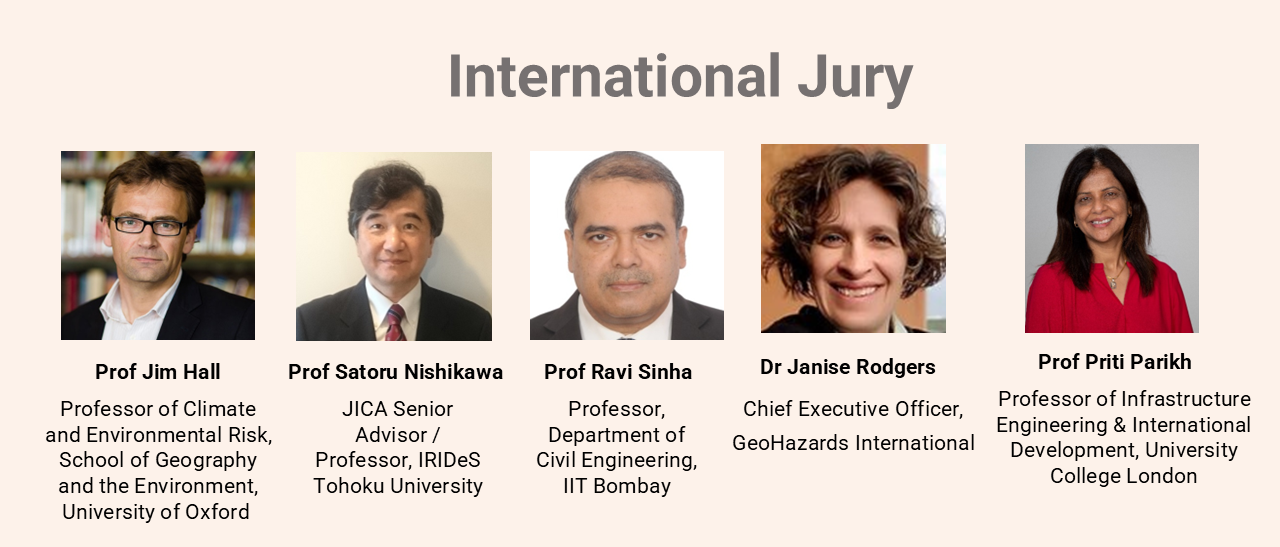- +91-11-4044-5999
- info@cdri.world
-
Copernicus Marg, New Delhi, INDIA
Call For Proposals 2025-26

French Spanish
Update: The submissions received for Cohort 2025-26 are undergoing review. Selected applicants will be informed by email in May and the Cohort will be launched at ICDRI 2025 on 7 June.
The CDRI Fellowship Programme invests in cutting-edge research and innovative solutions towards disaster and climate resilient infrastructure. The Fellowship provides financial support, peer learning and capacity development opportunities to promote transformative, actionable and scalable solutions for real world issues related to disaster resilience of infrastructure. The Fellowship Programme is designed to create a global multi-disciplinary pool of future-ready professionals and practitioners who will help shape resilient infrastructure systems to prepare for a growingly uncertain future.
Grant Amount: US$ 15,000 + Additional funding of US$ 5000*
*Up to 4 teams, based on project performance, technical expert recommendations and internal review at secretariat. The aim is to create a competitive cohort and encourage well-performing teams to take their solution to the next level of development/implementation.
Duration: 12 months + 6 months (for the teams selected for additional funding)
Eligibility Criteria: The Fellowship is open only to citizens of CDRI Member Countries. Applicants may include students, researchers, academicians, practitioners from government agencies and non-governmental, private and civil society organizations.
Selection Criteria: The proposals will go through a rigorous multi-tiered selection process including double-blind peer review. The final decision will be taken by the Fellowship’s International Jury.
Shared Challenges, Diverse Solutions: Collaborative Pathways to Resilient Infrastructure
Proposals are invited for any one of the themes mentioned below:
Wildfires
Wildfires are intensifying in frequency and severity due to climate change, creating significant hazards across diverse geographies such as densely forested areas in North America, Australia, the Mediterranean and subtropical grasslands in Africa and Asia. As wildfires spread, they pose critical challenges for infrastructure resilience, including threats to power grids, transportation networks, water systems and public health infrastructure.
Coastal Resilience
Coastal regions are vulnerable to a wide range of marine geohazards and threats from climate change induced sea-level rise and extreme weather events. Developing resilient coastal infrastructure is crucial for safeguarding both urban and rural communities, especially in small islands, delta regions and coastal cities.
Extreme Heat
Human-induced climate change and the consequent, irreversible warming of the planet is exacerbating extreme heat conditions across the world. Building resilience in critical infrastructure sectors to extreme heat events is imperative for the health and wellbeing of communities and sustained economic growth. This will require investments in infrastructure upgrades, improved heat-related risk assessments, and enhanced emergency response plans. Innovative cooling technologies, efficient energy management, and urban planning solutions.
Any other theme of the applicant’s choice provided it focuses on disaster resilience of infrastructure. Applicants may reach out to us with project abstracts for feedback prior to initiating the online application. Only a limited number suggested themes will be considered.
Project proposals may adopt the following approaches to address the chosen theme:
- Application of technology and earth sciences data for risk assessment, modelling, mapping, real-time monitoring and early detection
- Advanced infrastructure solutions such as fire-resistant and sea-water corrosion resistant materials
- Infrastructure governance issues related to policies, legislations, codes and standards, and training needs
- Nature-based Infrastructure Solutions (NbIS)
- Development of early warning systems
- Embedding resilience in critical infrastructure (e.g., ports, seawalls, stormwater management systems, energy grids, telecommunications, etc.) and social infrastructure (e.g., school and hospitals).
- Impact of hazards on infrastructure and mitigation strategies for recovery, reconstruction and resilience-planning
- Resilience of community infrastructure (e.g., community centres, shelters, parks, etc.) through strengthened local governance and indigenous disaster risk reduction practices which are inclusive towards women, children, differently abled persons and marginalized communities
FAQs: https://cdri.world/fellowship/faqs
Read more about previous Fellowship projects: Cohort 2021-22, Cohort 2022-23, Cohort 2023-24, Cohort 2024-25
How to apply: https://cdri.world/fellowship/how-to-apply
Apply Online: https://fellowship.cdri.world/login
Launch Date: 17th October 2024 (Thursday, 11:59 PM IST)
Last Date of Application: 02nd Dec 2024 (Monday, 11:59 PM IST)

